Case Number : Case 4005 - 27 May 2022 Posted By: Dr. Richard Carr
Please read the clinical history and view the images by clicking on them before you proffer your diagnosis.
Submitted Date :
"F45. Temple. BCC.
Diagnosis: BCC, nodular keratotic and focally infiltrative (DDx Basosquamous)"
Diagnosis: BCC, nodular keratotic and focally infiltrative (DDx Basosquamous)"

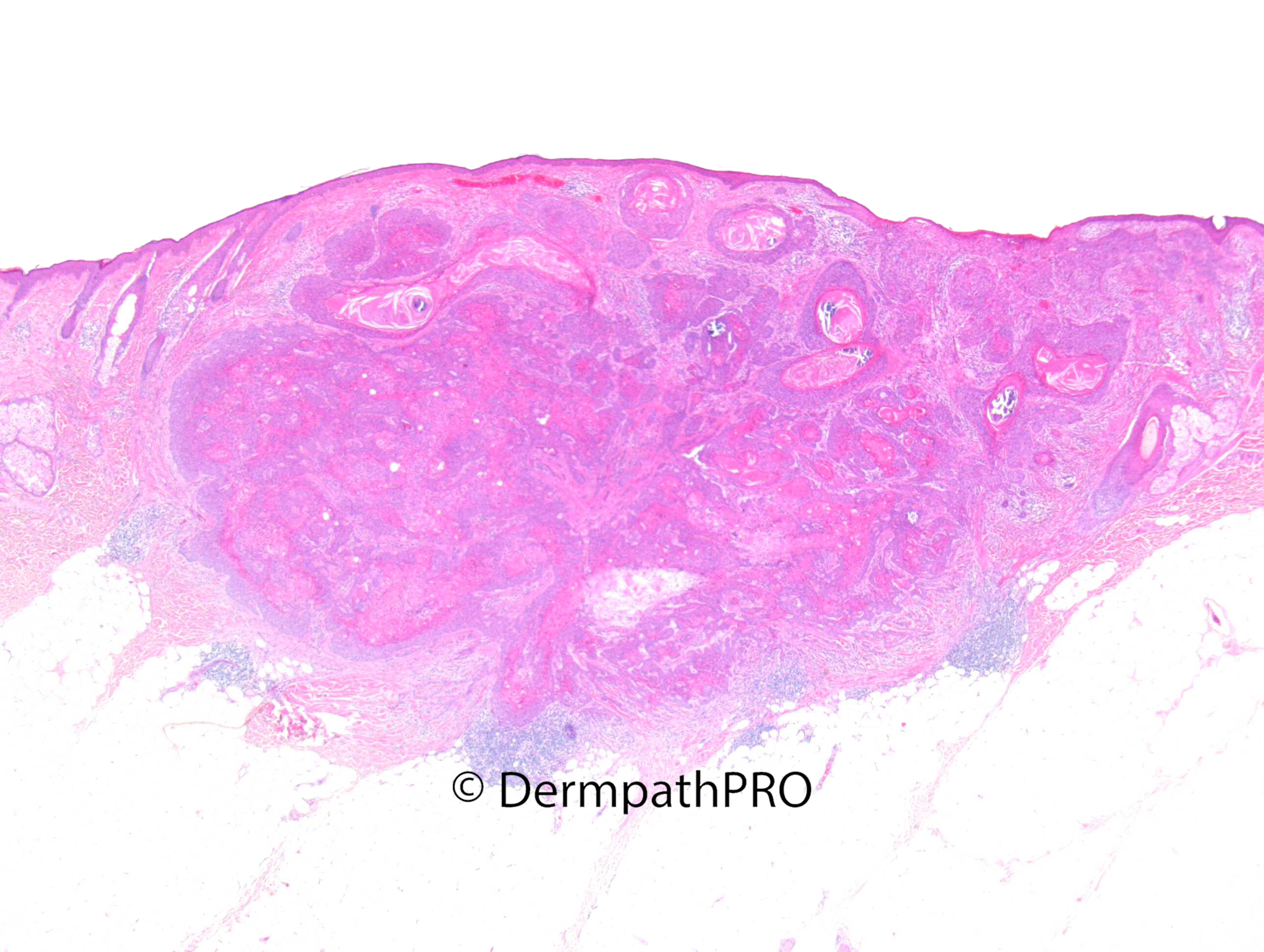
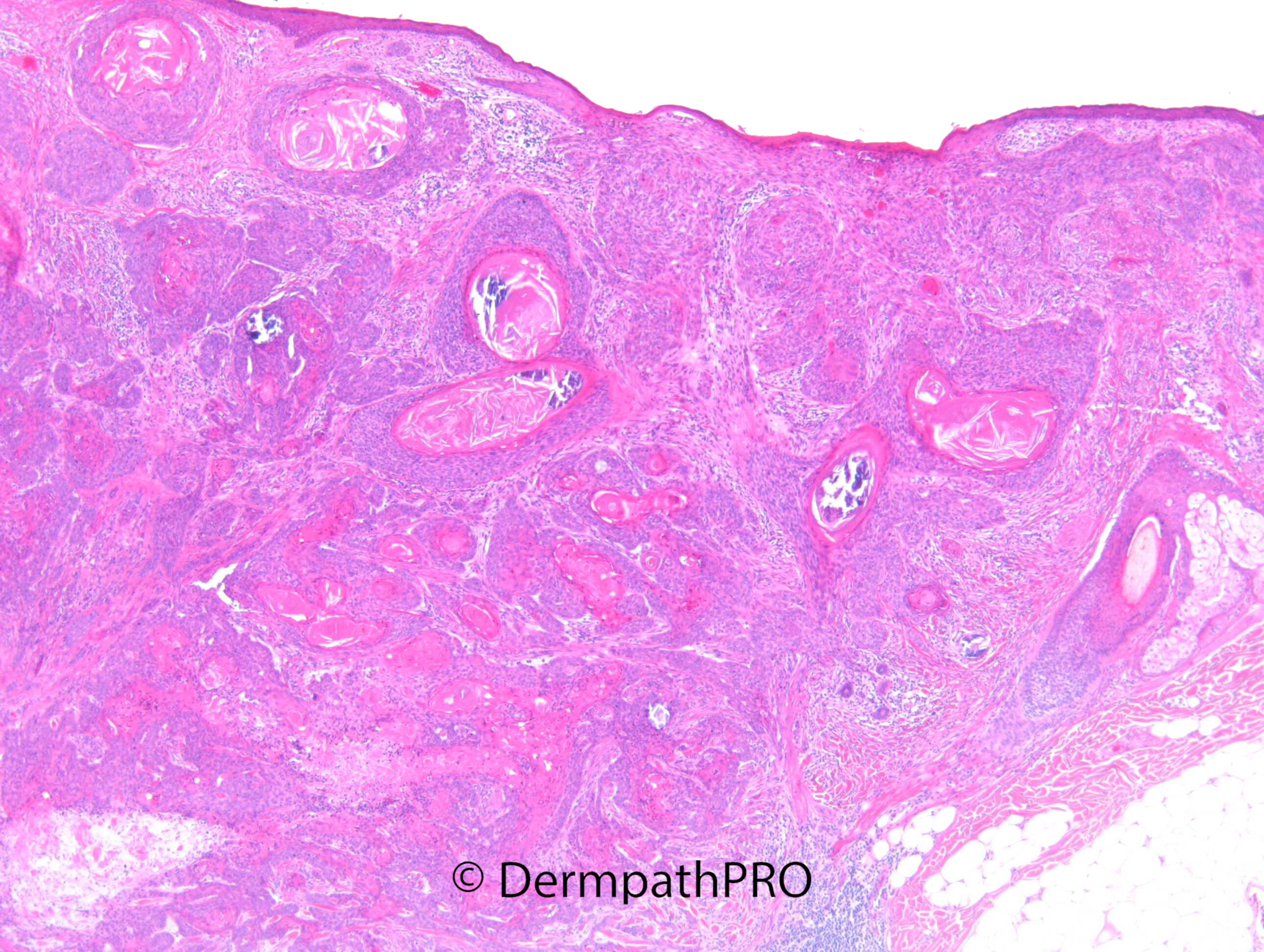
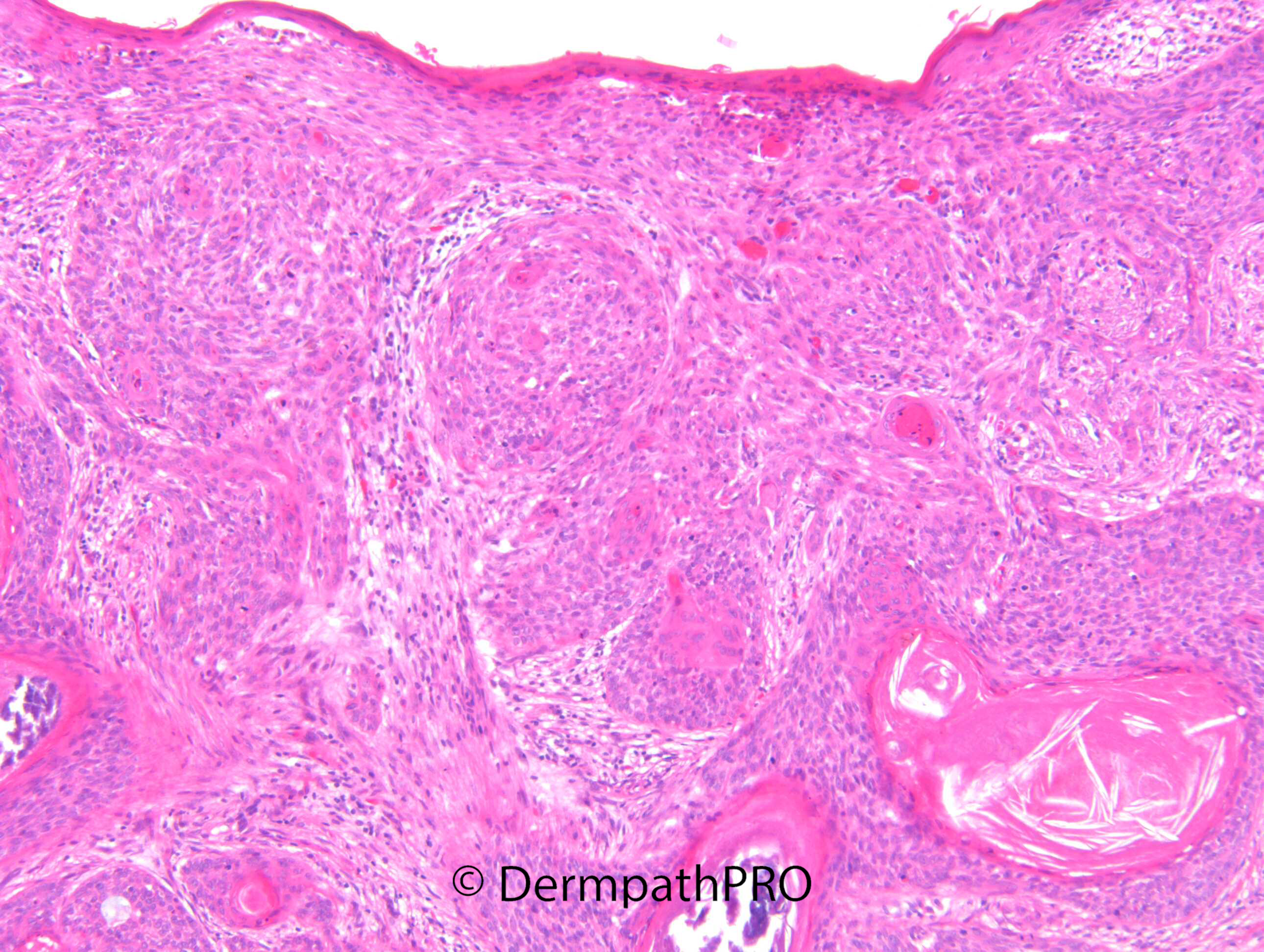
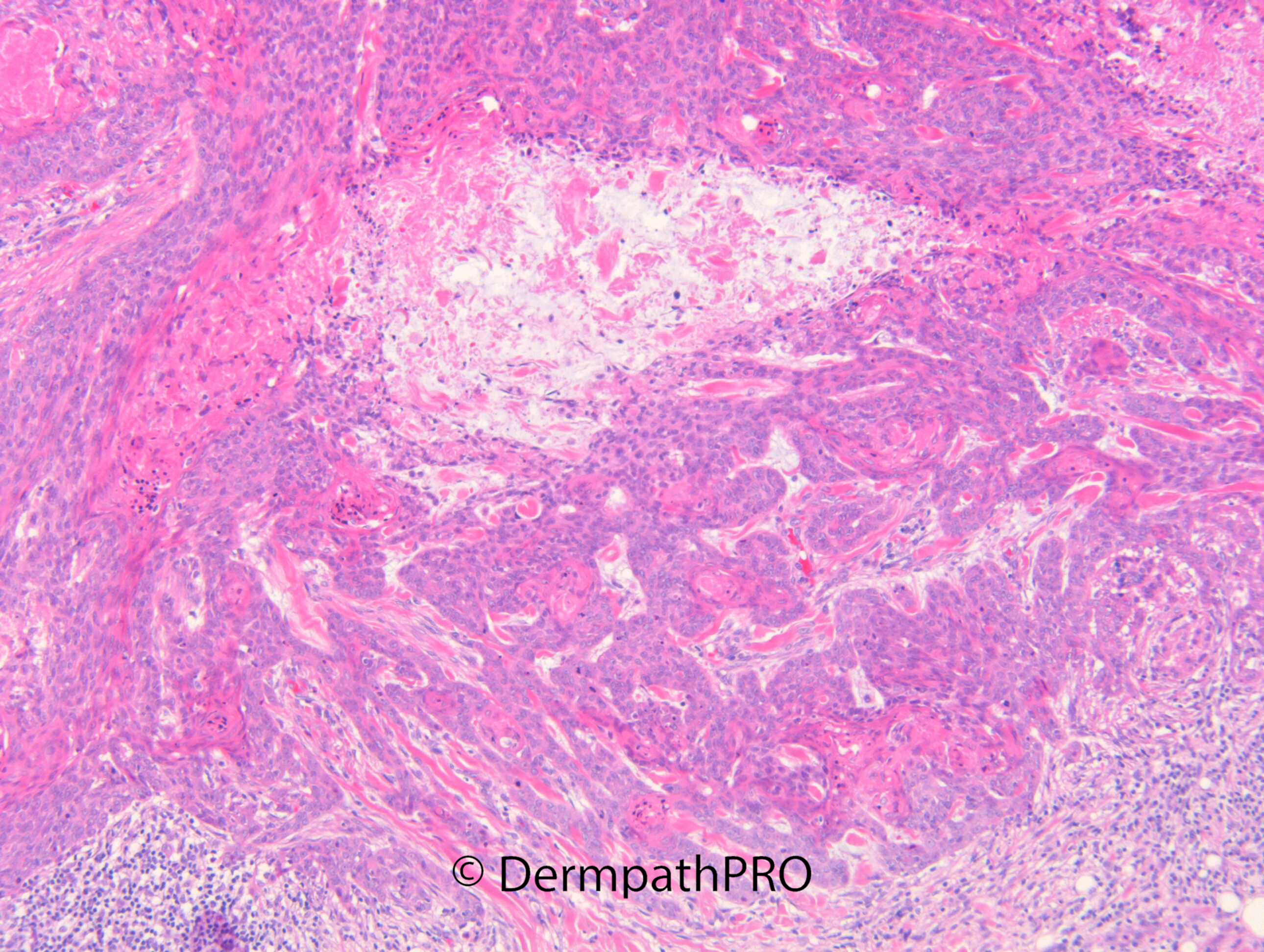


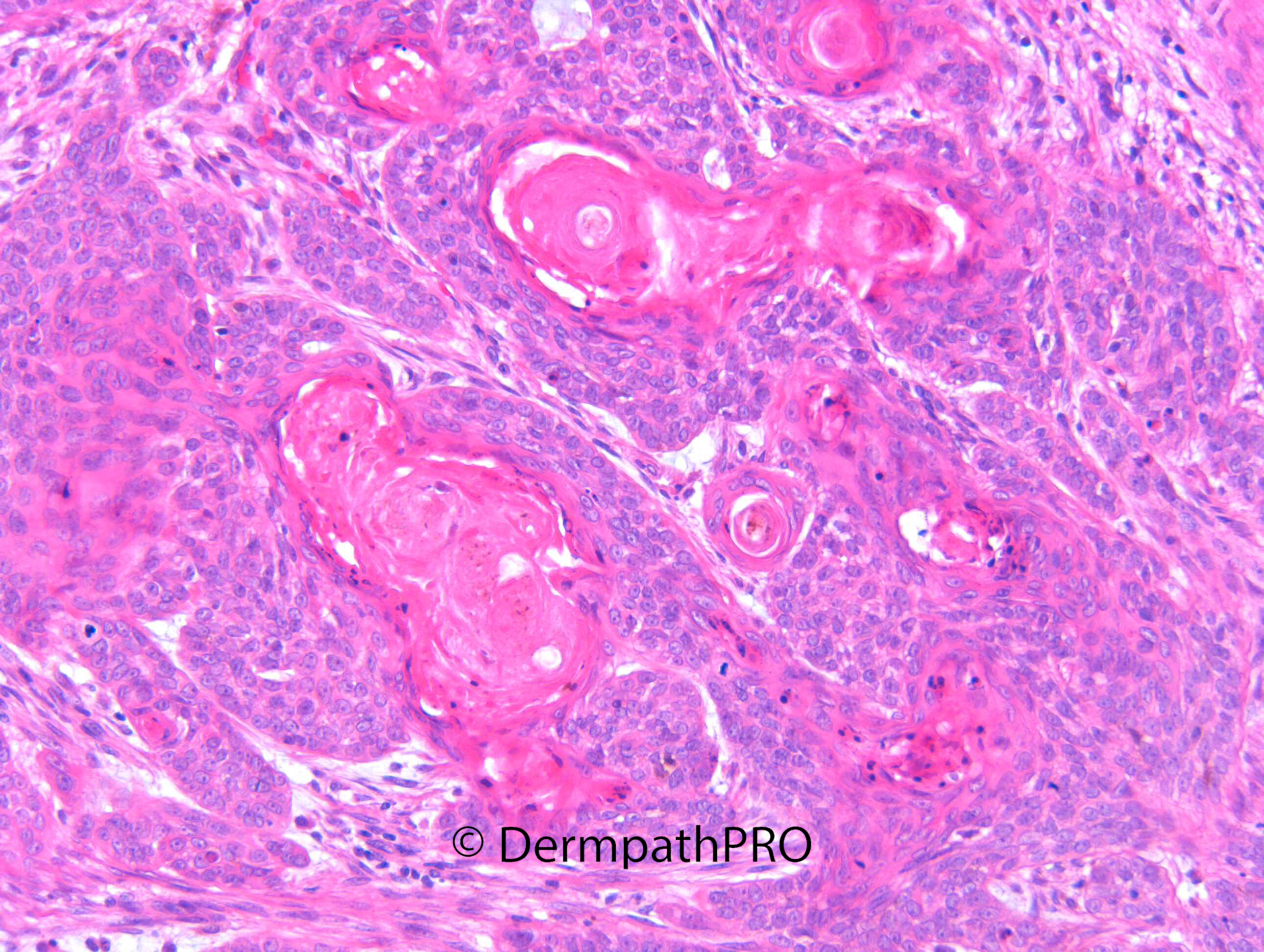
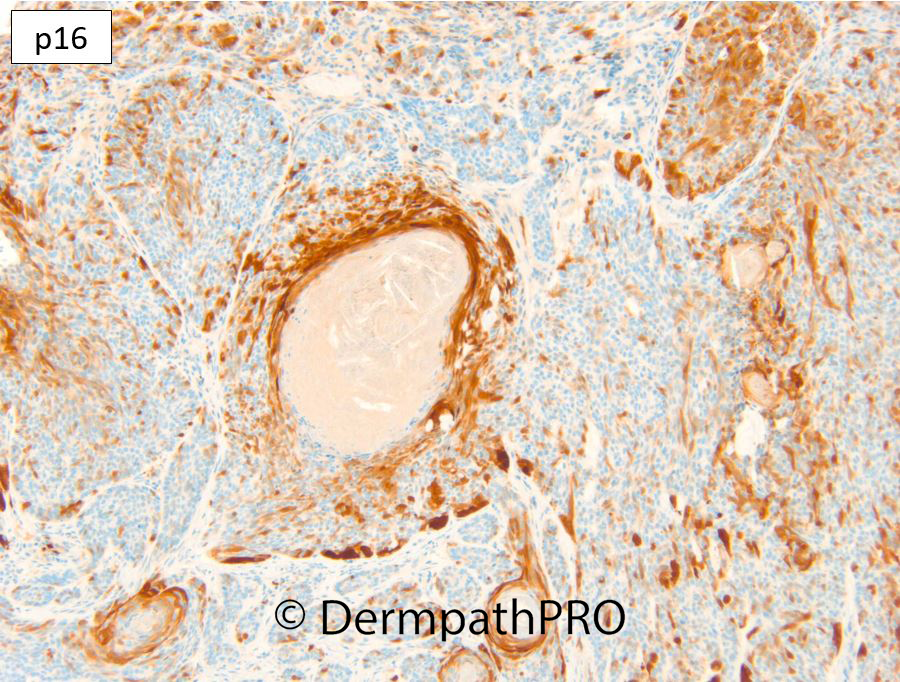
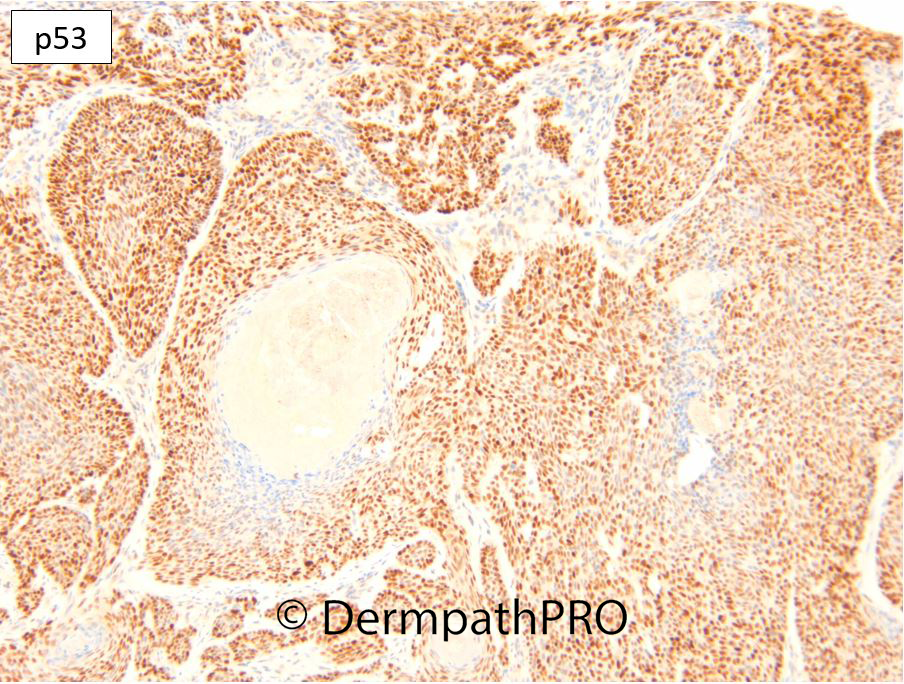
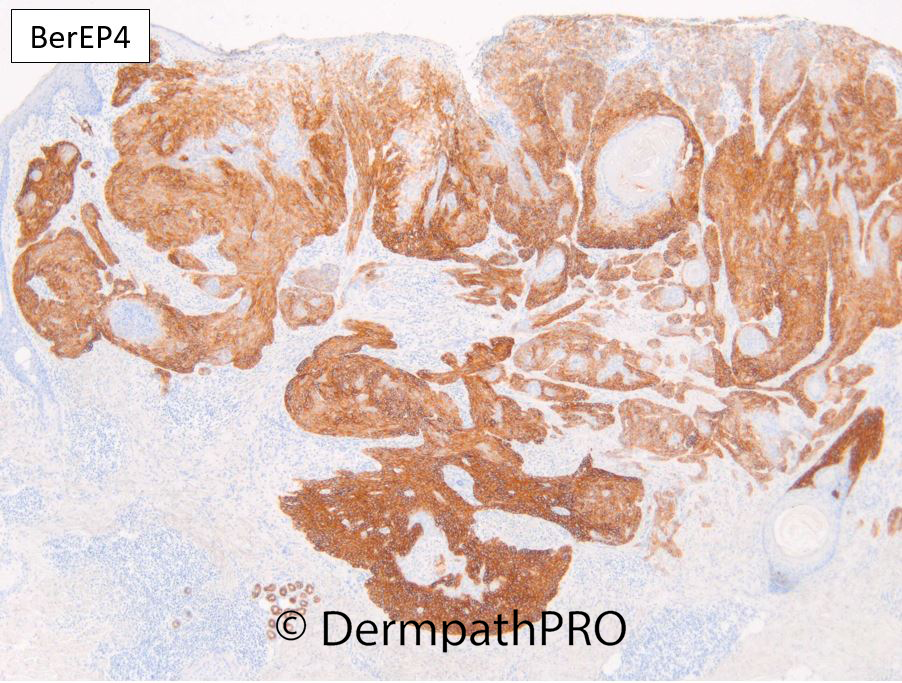
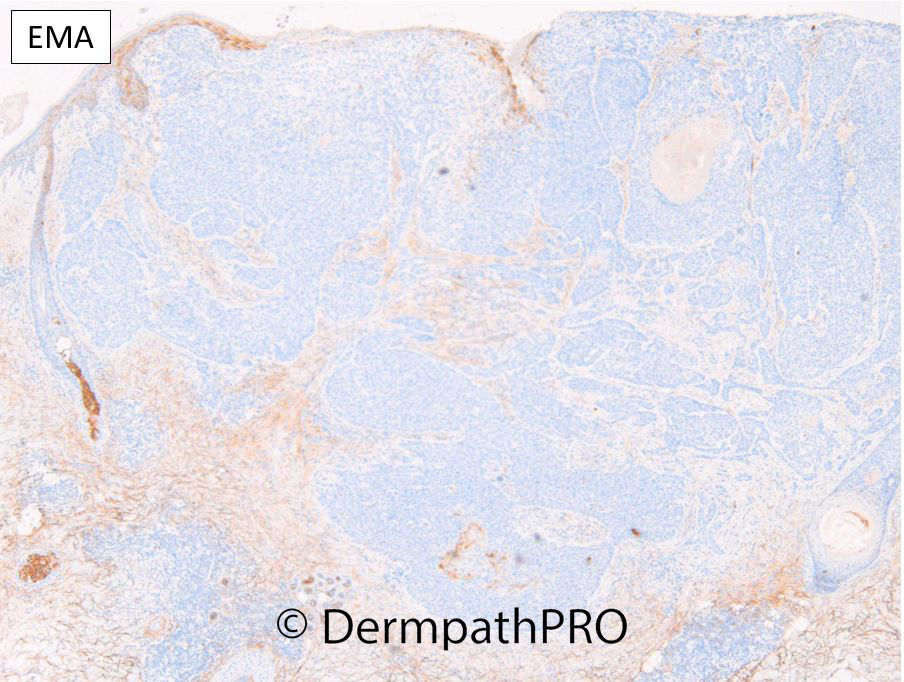
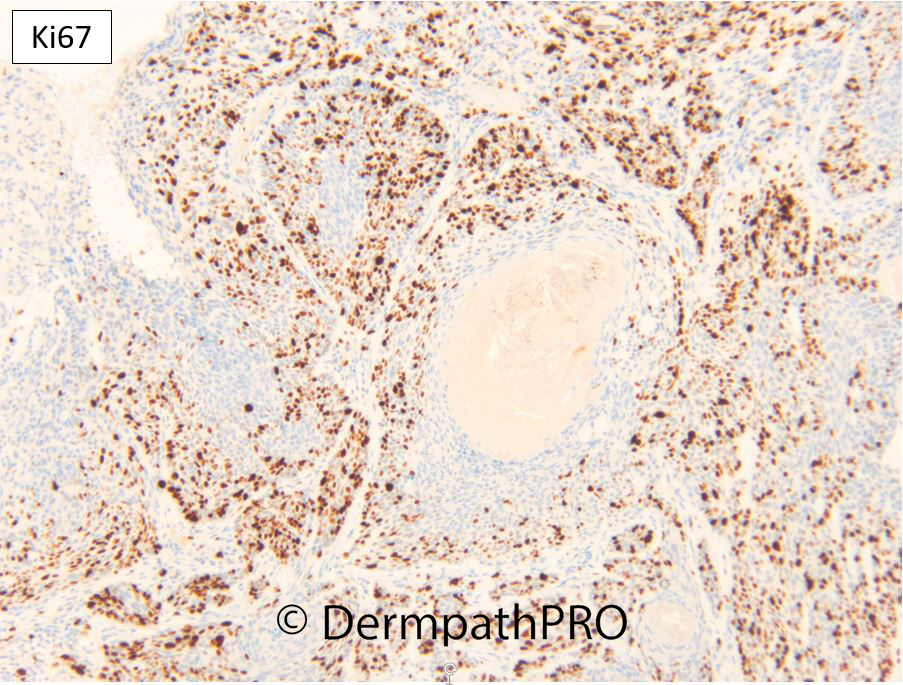
Join the conversation
You can post now and register later. If you have an account, sign in now to post with your account.